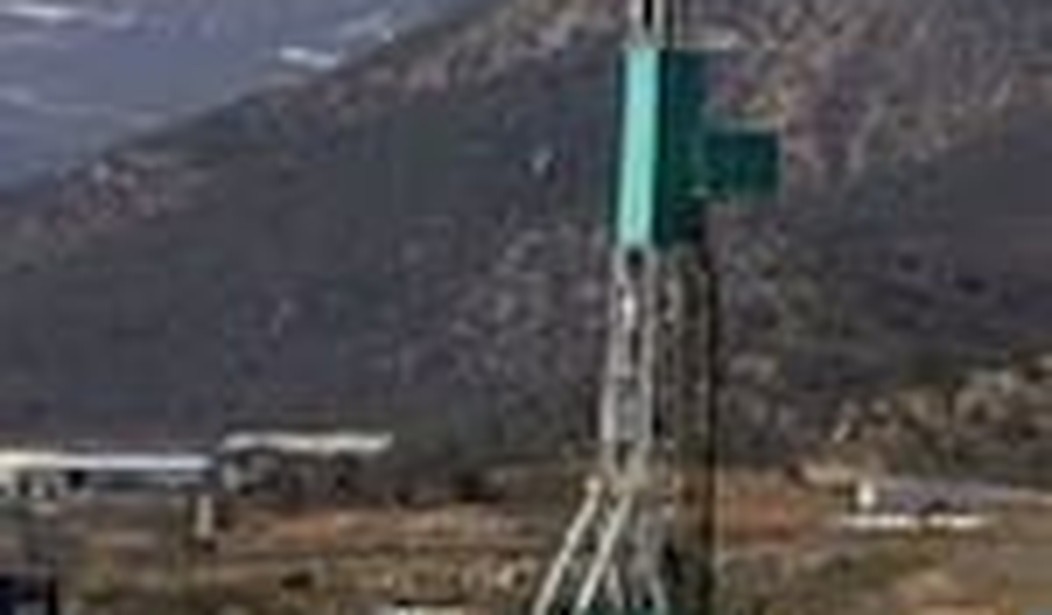In the last few years, various environmental groups have tried to portray hydraulic fracturing — sometimes known as “fracking” — as a new process, but in reality the process is anything but new.
According to David Bleakley of the Eastern Kansas Oil and Gas Association, hydraulic fracturing — where water is pumped down a well to rupture the oil-bearing strata hundreds or thousands of feet below the surface — has been in use since the late 1940s. The first “frack” was performed in western Kansas in 1947. What is relatively new is the combining of horizontal drilling techniques and fracking, but even this process has been used for more than a decade.
Fracking has become a convenient club, not just in major oil-producing states such as Oklahoma and Texas, but also in minor production states like Kansas. Bleakley claims that whether it’s environmentalists, people who favor another industry, or the landowners, it’s become a strategy to use fracking as an excuse. Bleakley believes part of the problem is that people opposed to fracking in particular and oil and gas exploration in general do not generally clarify all their connections.
Joe Spease, a high-ranking member of the Kansas Sierra Club, is also president and CEO of WindSoHy, a firm specializing in so-called renewable energy. He has a vested interest in restricting the production of more traditional forms of energy. On March 5 of this year, Spease debated Ed Cross of the Kansas Independent Oil and Gas Association without revealing his ties to the renewables industry. Says Bleakley:
You know exactly what Ed Cross is. (But in the case of Spease) you’re not only (the fracking committee chairman) of the Sierra Club but you’re president of a wind industry company. Let’s have transparency about the people in the debate.
Bleakley says the motives of many of the environmental groups which go after the oil and gas companies are simply monetary: they file lawsuits ostensibly to “protect the environment,” but are happy to settle:
If you’re an environmental attorney this is great. You finally wear down the companies — “I know this is extortion, but what do I have to pay to have you go away?”
One legitimate concern is the water used to make the fracks. About 99 percent is salt water, and the rest is a series of chemicals — mostly surfactants which make water “slicker” — but the exact composition is usually proprietary information unique to each company. That water is highly toxic and is pumped back down secondary wells called “injection wells,” anywhere from two to four miles underground.
According to Bleakley, concerns about contamination of groundwater, such as the Ogallala Aquifer, are overblown. He says the water table is almost invariably hundreds or thousands of feet above the area where oil is found, and concrete “well casings” are required to surround the well from the surface to below the water table. Indeed, the first frack in Kansas in 1947 was done through the Ogallala.
Another tactic by the environmental left has been to raise the specter of earthquakes caused by the process. While there is some evidence the injection wells where the toxic wastewater from fracking is pumped back into the ground can cause minor earthquakes, there is controversy over whether or not this is actually the case. Groups like the Sierra Club have suggested such quakes could damage nuclear power plants and cause a Fukushima-type disaster. Indeed, Spease suggests that would be the case with the Wolf Creek plant in Burlington, KS, as a story by a Kansas City-area TV station suggested earlier this year:
Oklahoma geologist and man-made earthquake expert, Austin Holland, took a more measured stance.
“We have known for a long time that deep injection can cause earthquakes,” Holland said. “And there are some good classic examples, and some more recent examples of injection wells triggering earthquakes.”
Among those recent examples is a 4.0 magnitude quake in Youngstown, OH, as well as a 5.3 tremor in southern Colorado and a 5.6 event outside of Prague, OK.
Spease was one of the people making dire predictions if fracking continues near the plant:
“This would be a disaster like we have not seen in this country,” Spease warned.
Apparently, the geologist didn’t agree:
“I don’t believe there is an inherent risk, at that sort of magnitude,” Holland said. “That’s kind of alarmist.”
Wolf Creek spokeswoman Jenny Hageman backed up Holland’s assessment, telling KCTV5:
We are built to safely shutdown and to maintain the reactor in a safe condition in the event of a significant earthquake, especially for our area.
Hageman said the nuclear plant was built to handle a quake in the neighborhood of 7.0 on the Richter scale, a number greater than any tremor ever felt in Kansas history.
Bleakley agrees, saying this is all about shutting down an essential industry:
You get fearmongering among people. They don’t listen to the facts, or they don’t like the facts, or they don’t like certain industries.
Moreover, according to Bleakley, fracking is essential to production worldwide, particularly as it becomes more difficult to get to new reserves: “If you weren’t able to frack, you wouldn’t have near the production; we’d have a severe oil crunch.”
Bleakley says much of the controversy is politically motivated as well, noting the oil industry in general and fracking in particular have been heavily regulated for decades. Many states, Kansas included, have more stringent regulations than the EPA:
You could probably track concern about fracking by the changes in administration.









Join the conversation as a VIP Member